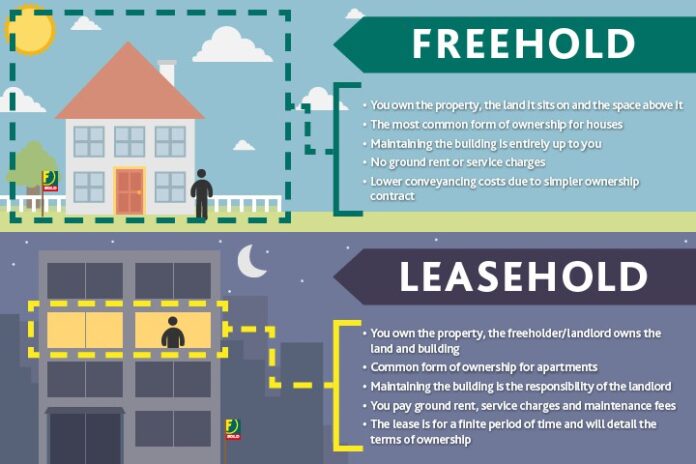Purchasing a property for the first time is one of the most exciting milestones in any adult’s life – however it can be a bit of a minefield. From property types to mortgage rates, to stamp duty and more – there is an endless list of things to consider when it comes to getting onto the property ladder.
In this article, we explore the differences between leasehold and freehold properties, and the pros and cons that each of these hold.
What is a Leasehold Property?
A leaseholder is someone who purchases a property, however the land it is situated on is owned by the freeholder. This gives you the right to occupy the property for as long as the lease is valid. It is typically buildings such as flats that are leasehold properties. Ownership of your property is agreed for a set amount of time (known as your lease), which can be a number of years or decades depending on the length decided in your contract. Once your lease comes to an end, ownership of your property then technically passes on to the freeholder of the land once more.
What is a Freehold?
Freehold is where you have complete ownership of a property as well as the land that that property resides on. You own it ‘freely’ which is where the name comes from. When buying a freehold property you are solely in charge of the building, and any decisions based around changing it or the land it sits on. When buying a freehold property, remember that despite complete ownership, you must still apply for relevant planning permission if you plan to work on any project that may require this.
What Are The Pros and Cons of Leaseholds and Freeholds?
The pros of leaseholds are:
- They tend to be cheaper than freehold properties
- You are not responsible for building maintenance in communal areas
- The freeholder is in charge of overseeing the structure and maintenance of the building, so if anything goes wrong with this it is up to the freeholder to sort out as opposed to the leaseholder
The cons of leaseholds are:
- You pay service charges and ground rent to the freeholder
- You need written permission from the freeholder to change anything within the property
- It is likely you will be prohibited from sub-letting your property. If you are allowed to sub-let, you may wish to enlist the help of a professional agency to help with the process of renting out your property.
The main pros of freeholds:
- Both property and land is under your complete ownership
- You don’t permission to make changes to your property
- You don’t have to pay extra for ground rent
- You can have pets
- You can sub-let freely if you want to
The main cons of freeholds:
- Freeholds are often more expensive
- They usually only refer to houses as opposed to flats
- There are no communal features such as a reception, concierge, mailroom or onsite gym






























































